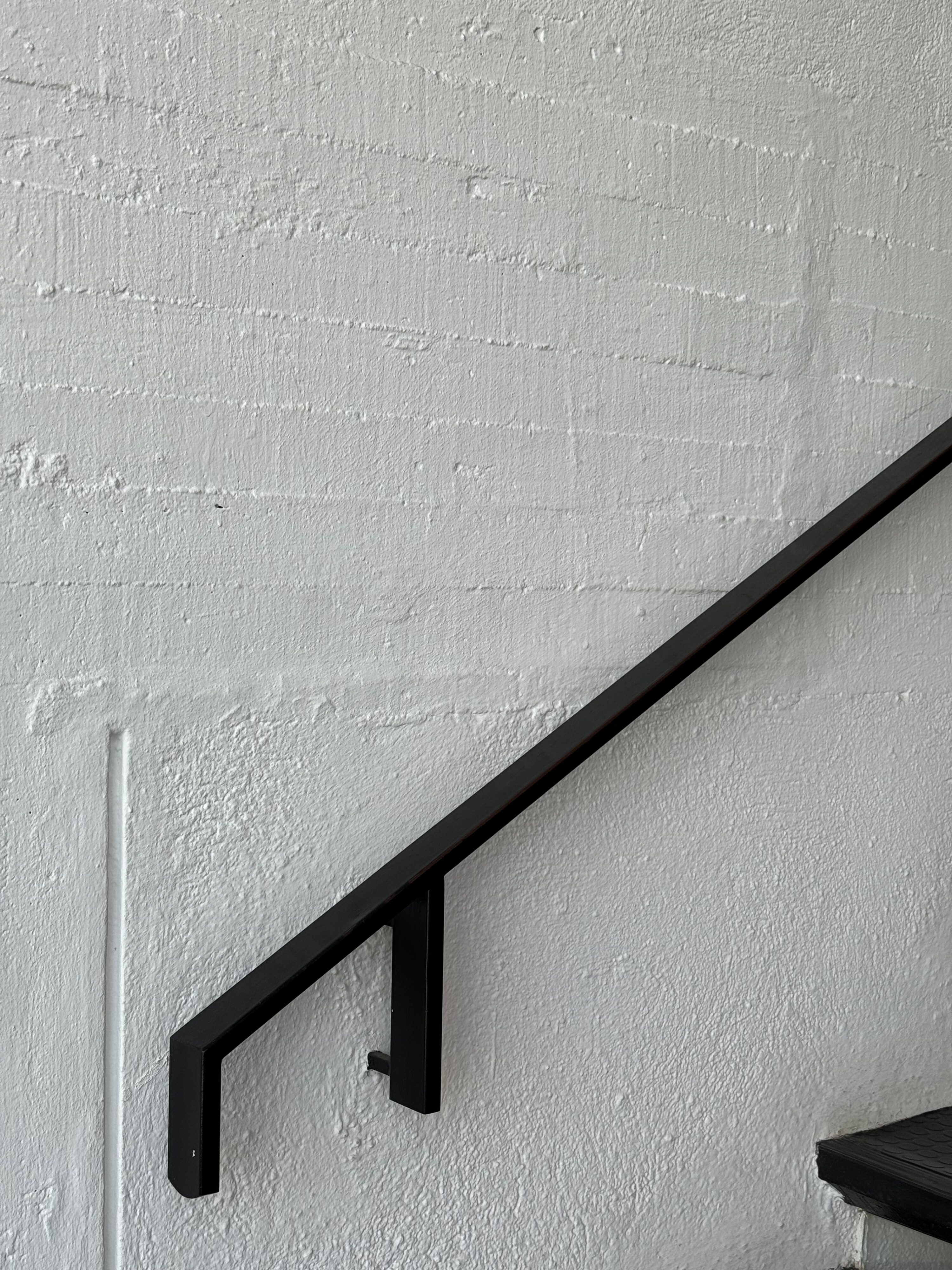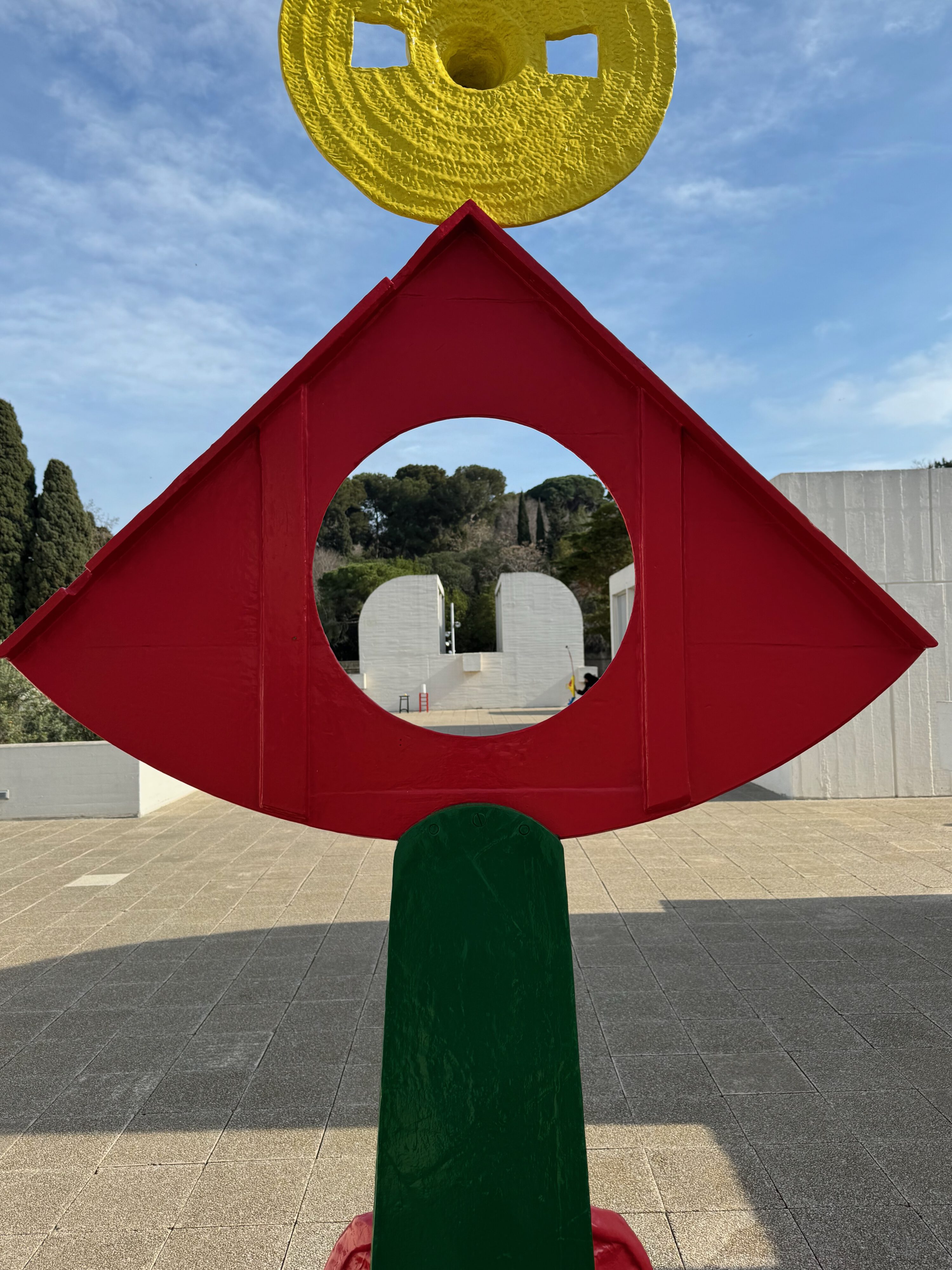
The Miró Foundation (Fundació Joan Miró) in Barcelona is a cultural institution dedicated to the life and work of the renowned Catalan artist Joan Miró. Here’s what makes it special and why it’s worth visiting:
Collection of Miró’s Artworks: The foundation houses one of the most extensive collections of Joan Miró’s artworks, including paintings, sculptures, drawings, and prints. Visitors have the opportunity to explore Miró’s diverse artistic output spanning his entire career, from his early surrealist works to his later abstract and experimental pieces.
Architectural Gem: The Miró Foundation is housed in a striking building designed by the renowned architect Josep Lluís Sert, who was a close friend of Joan Miró. The building’s modernist architecture features spacious galleries, natural light-filled atriums, and panoramic views of Barcelona, providing a fitting setting for Miró’s art.
The architecture of the Joan Miró Foundation (Fundació Joan Miró) in Barcelona is a testament to the vision of the renowned Catalan architect Josep Lluís Sert.
Josep Lluís Sert was a pioneering figure in 20th-century architecture, known for his innovative designs and commitment to social and cultural progress. In addition to the Joan Miró Foundation, Sert’s notable architectural works include the Spanish Pavilion at the 1937 Paris Exposition and the UNESCO headquarters in Paris. His legacy continues to inspire architects, artists, and urban planners worldwide.
he Joan Miró Foundation is housed in a striking modernist building designed by Josep Lluís Sert. Sert’s architectural style is characterized by clean lines, geometric forms, and a harmonious integration of indoor and outdoor spaces. His design for the foundation reflects his commitment to functionalism and the principles of modernist architecture.


Spatial Organization: The foundation’s building is organized around a central courtyard, which serves as a focal point for the complex. The courtyard provides natural light and ventilation to the interior spaces and creates a sense of openness and connectivity throughout the building. Sert’s design emphasizes the relationship between architecture, nature, and art, creating a tranquil and inspiring environment for visitors to explore Miró’s artworks.
Cultural Context: Sert’s design for the Joan Miró Foundation reflects the cultural and political context of post-war Spain, with its emphasis on cultural renewal, artistic expression, and democratic values. The foundation’s building serves as a symbol of Catalonia’s artistic and intellectual heritage, celebrating the life and work of one of its most beloved artists.
Materials and Construction: Sert used a combination of traditional and modern materials in the construction of the foundation, including reinforced concrete, glass, and brick. The building’s façade features simple, unadorned surfaces punctuated by large windows and open-air terraces, reflecting Sert’s minimalist aesthetic and functionalist principles.


Joan Miró (1893–1983) was a renowned Catalan artist known for his innovative and surrealistic paintings, sculptures, ceramics, and prints.
Surrealist Movement: Miró was associated with the Surrealist movement, which emerged in the 1920s and sought to unlock the creative potential of the unconscious mind. His early works, such as “The Tilled Field” (1923-1924) and “The Harlequin’s Carnival” (1924-1925), feature dreamlike imagery, symbolic forms, and vibrant colors characteristic of Surrealism.
Automatism and Symbolism: Miró developed a unique artistic language characterized by spontaneous, gestural brushwork and a playful use of symbols and pictorial elements. He embraced the Surrealist technique of automatism, allowing his subconscious mind to guide his creative process. Symbols such as stars, birds, moons, and biomorphic shapes frequently appear in his works, imbuing them with mystery and symbolism.


Experimentation with Materials: Throughout his career, Miró experimented with a wide range of artistic materials and techniques, including oil paint, gouache, collage, and sculpture. He often incorporated unconventional materials such as sand, gravel, and found objects into his artworks, adding texture and depth to his compositions.
Later Works and Abstraction: In the post-war years, Miró increasingly moved towards abstraction, exploring simplified forms, bold colors, and spontaneous gestures in his paintings. His later works, such as the “Ladder of Escape” series and the monumental “Mural Painting” (1960) for the UNESCO headquarters in Paris, reflect his interest in pure form and expression.

One Reply to “Joan Miró Foundation”
Comments are closed.